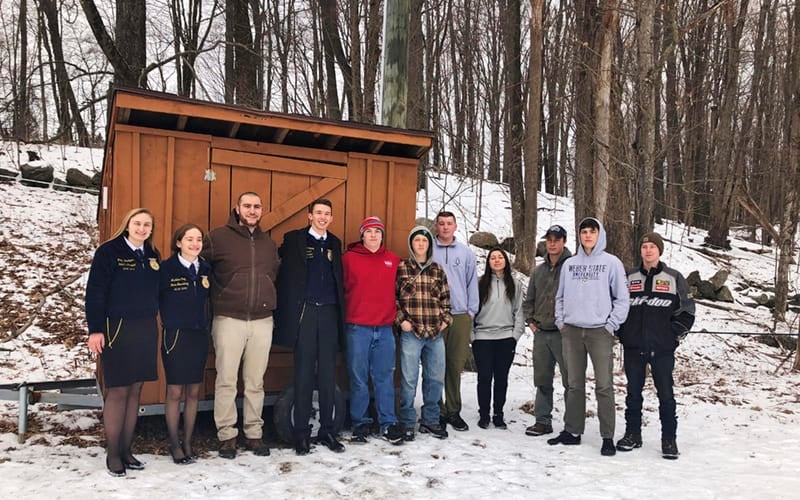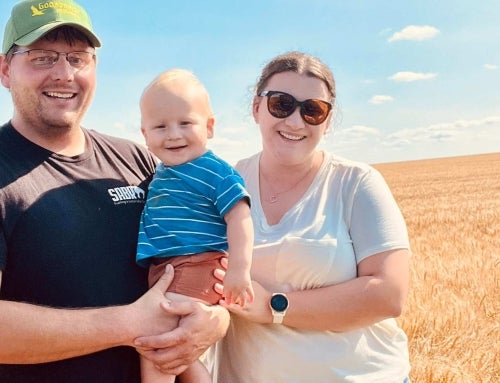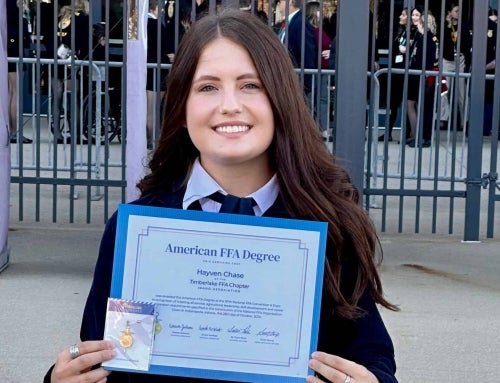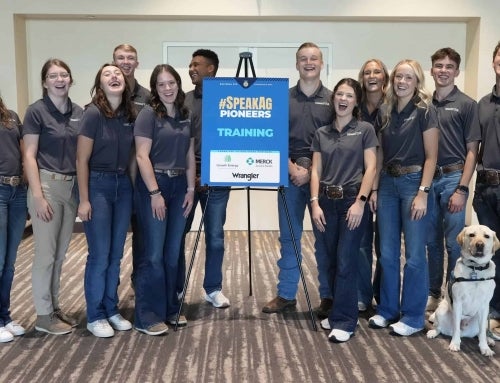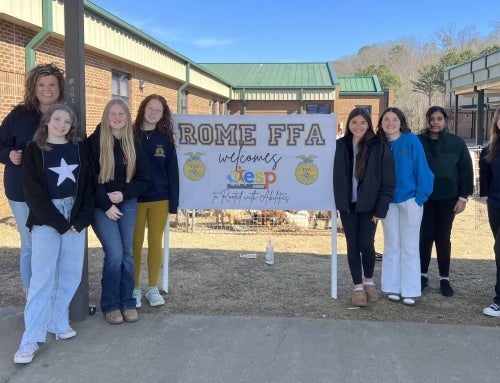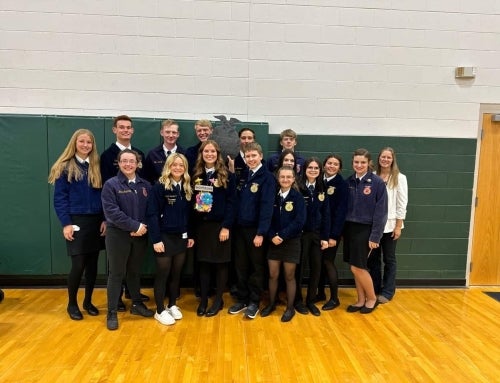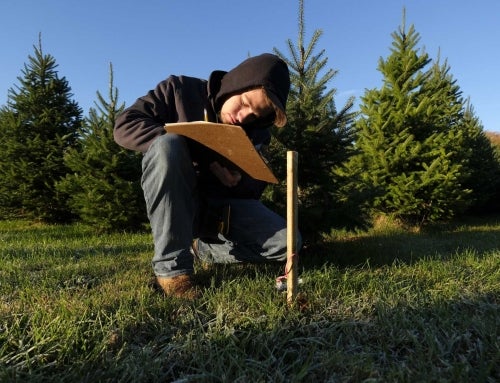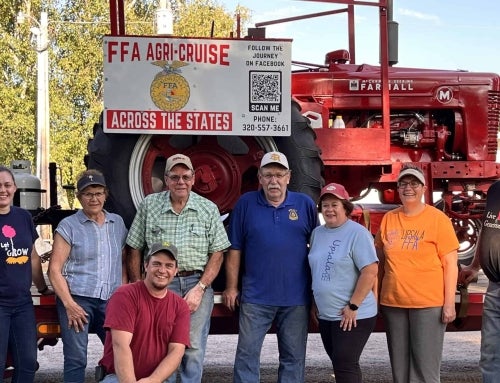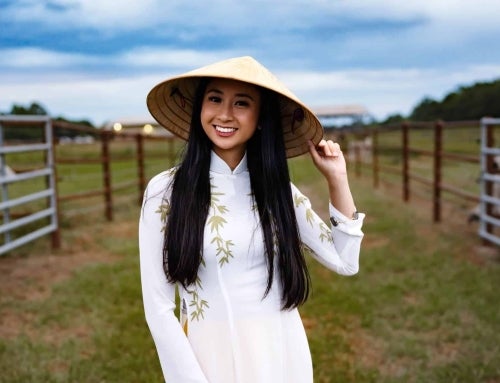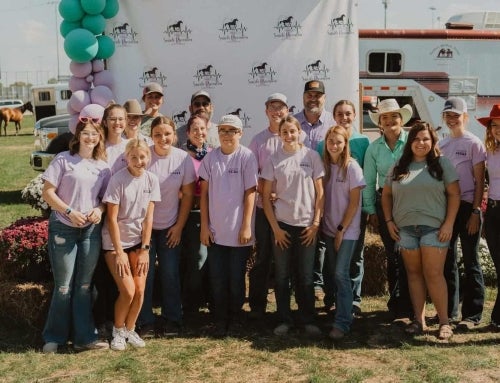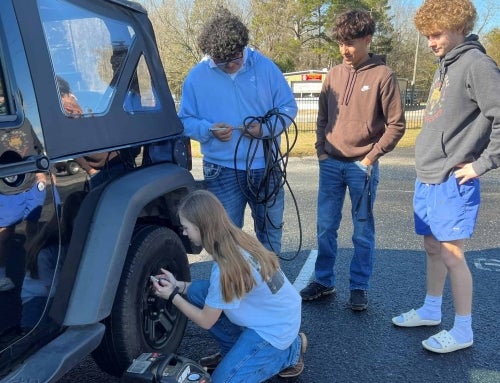Even though fourth-generation sugarmaker Henry Sarafin had been helping boil sap into syrup on his family farm in Chesterfield, Mass., he still looked forward to taking a sugaring class at Smith Vocational and Agricultural High School.
“I wanted to help teach other FFA members about sugaring and get them to feel as excited about it as I do,” he says.

Smith Vocational and Agricultural High School FFA member Connor Pfalzgraf in the sugarbush.
The sugaring class at the school includes lessons on forest management, syrup production, sales and marketing. Students are responsible for all aspects of the process, from tapping trees and collecting sap to boiling it in to syrup and selling the finished product. It also engages students in an age-old agricultural tradition.
American sugarmakers collected sap from 13.3 million taps and produced more than 4.24 million gallons of maple syrup last year, according to the United States Department of Agriculture. Several FFA chapters in the Northeast have established their own forest of sugar maple trees, known as a sugarbush, to learn about the rewards and challenges of making their own maple syrup.
Jim Anspach, agricultural education instructor and FFA advisor at Smith Vocational and Agricultural High School, believes sugaring classes and hands-on work in the sugarhouse expose students to math, science, business, history and environmental studies while keeping a New England tradition alive.
“Sugaring is a good transition from the classroom,” he says. “It gets students outside to do something cool and helps them understand the hard work that goes into making maple syrup.”

Former Paradice FFA Chapter president Dustin Peterson checks the syrup’s density. Members here collect sap from 300 trees and boil it down in their onsite sugarhouse.
Sticky Situations
In Whitefield, N.H., the sap runs for less than six weeks, and Paradice FFA members at White Mountains Regional High School work at a frenzied pace to collect sap from 300 trees and boil it down in their onsite sugarhouse, a small cabin where the maple sap is boiled. FFA Alumni Dustin Peterson, 20, and Cloe Bean, 18, often worked late into the evenings to keep the evaporator running.
“The season is short and intense,” says agriculture teacher and FFA advisor Jenn Scarinza. “You are trying to seize a very fleeting opportunity when Mother Nature dictates, and you have to work together to get it done.”
At Smith Vocational and Agricultural High School, even alumni pitch in during sugaring season.
Students collect sap in buckets, hanging from up to 40 sugar maple trees on campus, but the school lacks its own sugarhouse to process the sap into syrup. Students boil some of the sap over an open fire, which ensures that FFA members get hands-on experience. Most of the sap is transported to a local sugarhouse, where an FFA Alumni member boils it down and bottles it for the chapter. The chapter collects 350 gallons of sap and produces an estimated nine gallons of syrup.
“Most of the students in our program do not come from ag backgrounds,” Anspach says. “They learn a lot about how finicky the season can be and how many hands it takes to get maple syrup from tap to table. They also get to see how much community support there is for agriculture.”

Cloe Bean taps a tree.
Proud of the Product
Peterson admits that fellow FFA chapter members teased him for carrying around a pint of syrup and spoons at the National FFA Convention & Expo and encouraging FFA members from other schools to try a sample. The former state officer took the good-natured ribbing in stride because he is proud of the work Paradice FFA members did to produce their own maple syrup.
“I spent so many hours after school tending to a fire just to make three extra gallons of syrup,” he recalls. “I wanted to show off our hard work and introduce FFA members to the concept of real maple syrup.”
Local communities get excited about the operations, too. The Wamogo FFA in Litchfield, Conn., taps 100 trees on campus and boils it in an oil-fired evaporator. A local sugarmaker helps out with technical issues and problem-solving during the process.

Former national officer Valerie Earley makes treats with Paradice FFA members.
The finished syrup is sold in the on-campus ag store, where parents, staff and neighbors stock up on the sweet confection, and the revenue from syrup sales supports FFA events and scholarships.
Following the journey from production to consumption helps students learn the realities of agricultural production, according to assistant principal and FFA advisor Charles Rowland.
“The entire production is student-driven; the teachers keep things running in the right direction, but students do all the work,” Rowland says. “They see how much work goes into producing a single gallon of syrup.”
Some students take their devotion to maple syrup to the next level. Peterson created a business plan for a maple syrup operation for his capstone project and hopes to put it into practice when he starts his own sugaring operation in the future.

Wamogo FFA members work in the sugarbrush. The chapter taps 100 trees on campus.
Sarafin also pursued sugaring for his supervised agricultural experience. He started with 25 taps on his family farm and grew his operation to 100 taps while learning about working more efficiently and running a streamlined operation. He joined the family farm when he graduated from Smith Vocational and Agricultural High School in 2018, and he continues applying the lessons he learned in the classroom (and out in the sugarbush) in his operation.
Back at Paradice FFA, Bean led tours for school groups, which she believes got students excited about coming to high school. The sugaring operation also gave FFA members a taste of possible career options after graduation.
“Maple syrup is a booming industry around here,” Scarinza says. “New taps are going in all the time and [sugarmakers] need good help. It’s a fun class, but there is also a potential future in it.”

Wamogo FFA members in the sugarbush.
Pass the Syrup
Here are just a few of the FFA chapters that operate sugarhouses to teach students about the intricacies of forest management, tapping trees, collecting sap, along with producing and marketing maple syrup.
The Woodbury FFA Chapter at Nonnewaug High School in Woodbury, Conn., started tapping trees in 1989. Agriculture teacher and FFA advisor George Lyman works alongside students to produce 25 gallons of maple syrup each season. In addition to making maple syrup, students learn about the science, math, forest management and Native American history that are essential elements of the iconic agricultural product.
The sugaring operation at Vernon Verona Sherrill High School in Verona, N.Y., has grown tremendously since its inception, according to Sara Ouellette, agriculture teacher and FFA advisor. Last season, students tapped 750 trees in the school sugarbush and sourced sap from FFA alumni to produce 2,000 gallons of maple syrup – a school record. The syrup is sold retail by FFA members to a large base of community members and is sold whole-sale to local stores and restaurants.
Several FFA members at Northwestern Regional School in Winsted, Conn., have started SAEs or small businesses after learning the art of sugaring. Erick Wildes, agriculture teacher and FFA advisor, oversees production. Students collect sap from 75 taps on school grounds and tap additional trees throughout the community, including nonprofits and land owned by FFA alumni. In addition to syrup, the chapter makes confections such as maple candy.
Making Maple Syrup
Curious about the maple syrup-making process? Here’s the general process.
1. Insert taps into sugar maple trees. Sap runs when temperatures dip below freezing at night and rise above freezing during the day.
2. Collect sap. Sap can drip from taps into buckets or run via a series of vacuum tubes that lead to a holding tank.
3. Boil sap. Sap is boiled down in an evaporator. It takes about 40 gallons of sap to make one gallon of maple syrup.
4. Filter the syrup.
5. Bottle the syrup.
6. Pour over pancakes and enjoy!

